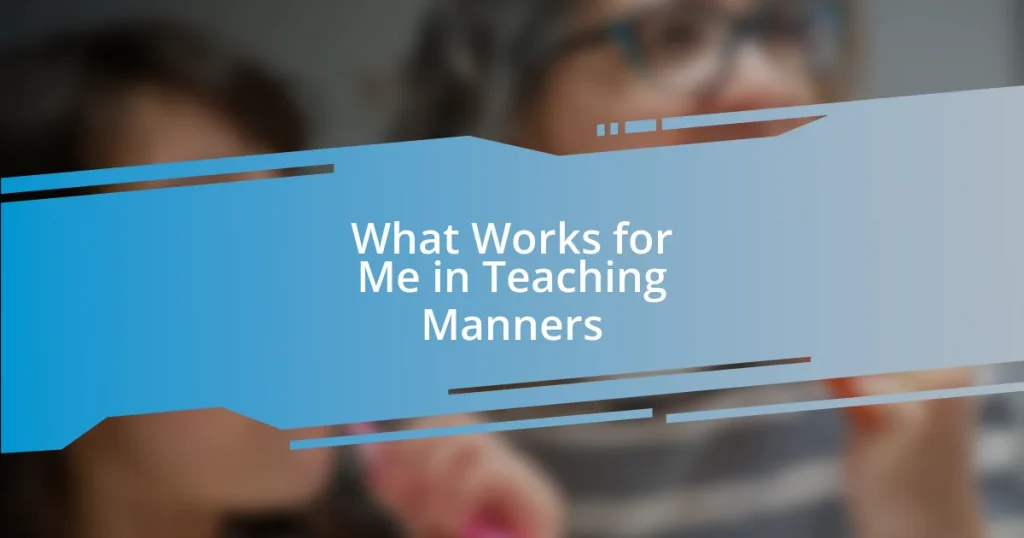Key takeaways:
- Open conversations require both vulnerability and active listening, fostering trust and deeper dialogue.
- Establishing a safe environment with clear communication norms encourages authentic expression and collaboration.
- Asking open-ended questions and embracing diverse perspectives enrich conversations, leading to greater understanding and empathy.

Understanding Open Conversations
Open conversations are essential for fostering genuine connections. I recall a moment when a friend and I sat on a park bench, delving deep into our thoughts over a coffee. It struck me how simple it was to dismantle barriers when we both chose to be vulnerable; in that openness, we found a renewed sense of trust.
I often wonder, what truly makes conversations “open”? Is it just sharing thoughts freely, or is there an element of active listening involved? From my experience, it’s both. When I make an effort to actively listen—pausing, reflecting, and asking clarifying questions—I not only show respect but also encourage others to share their authentic selves, which creates a deeper dialogue.
It’s fascinating how an open conversation can lead to unexpected insights. I once shared a personal struggle with a colleague, sparking an exchange that revealed common challenges. That moment was eye-opening for both of us; it reminded me that our stories, however unique, often resonate on shared emotional grounds, paving the way for understanding and empathy.

Identifying Barriers to Communication
I find that identifying barriers to communication is a nuanced process. In my experience, reflecting on both external and internal factors can significantly improve our interactions. For instance, I once struggled to discuss a sensitive issue with a family member due to my fear of their reaction. This fear acted as a wall, preventing that crucial dialogue from happening.
To better understand these barriers, I’ve come to recognize several common culprits:
– Fear of Judgment: Worrying how others might perceive our words can stifle honesty.
– Misinterpretation: Past experiences or biases can lead us to misread intentions or meanings.
– Emotional Baggage: Carrying unresolved issues might cloud current conversations, making openness difficult.
– Cultural Differences: Different backgrounds can result in varying communication styles and expectations.
By acknowledging these factors in my own life, I feel more equipped to navigate difficult conversations and foster openness. It’s about recognizing the unspoken hurdles that can impede genuine exchange.

Establishing a Safe Environment
Establishing a safe environment is crucial for encouraging open conversations. I remember the first time I sat with my mentor in a quiet café, where the warmth and soft lighting seemed to invite honesty. That space allowed both of us to speak openly without fear, reinforcing the bond we shared. When people feel safe, they are more willing to express their true thoughts and emotions, which is essential for meaningful dialogue.
Creating this safe space goes beyond physical surroundings; it requires an atmosphere of respect and trust. For instance, during a group discussion at work, I noticed how maintaining eye contact and giving everyone a chance to speak fostered a sense of belonging among team members. By actively showing my support through positive body language and attentive listening, I encouraged others to share their perspectives freely. This environment cultivated collaborative discussions rather than competitive debates.
I’ve also learned that clear communication norms can enhance safety in conversations. When my friends and I established “no judgment” rules during sensitive discussions, I felt a collective sigh of relief—it was as though a weight had been lifted. We were able to approach tough topics without the usual apprehension, which ultimately deepened our relationships. Creating a safe environment truly empowers individuals to engage authentically.
| Element | Importance |
|---|---|
| Physical Space | A calming environment encourages openness. |
| Emotional Support | Fostering trust allows individuals to share freely. |
| Communication Norms | Clear guidelines create a foundation for safe dialogue. |

Active Listening Techniques
Active listening is a game changer in fostering open conversations, and I find that practicing it can dramatically shift the dynamics of any dialogue. For example, I once had a discussion with a friend who was going through a tough time. Instead of jumping straight to advice, I simply reflected back what she was saying. I’d ask, “It sounds like you’re feeling overwhelmed?” This not only validated her feelings but also encouraged her to delve deeper. It’s amazing how powerful it can be just to show you’re truly present.
One technique I swear by is the “pause and reflect” method. Whenever I feel tempted to interrupt or respond hastily, I force myself to take a breath and really soak in what’s being said. I remember a particularly charged team meeting where emotions ran high. By allowing a moment of silence after my colleague finished speaking, I noticed everyone around the table relaxing, as if they were given permission to think before they reacted. This pause doesn’t just give space to process thoughts; it enhances empathy, creating a more respectful atmosphere.
It’s also crucial to be aware of non-verbal cues while listening. There was a time when I participated in a workshop where we practiced mirroring body language. Feeling the subtle shifts in posture or facial expressions helped me realize that communication is far more than words alone. Have you ever noticed how a simple nod can encourage someone to continue? It’s these little gestures that light up a conversation, showing the speaker that their voice matters. By engaging actively and being mindful of both verbal and non-verbal signals, I believe we can take any conversation to a whole new level.

Asking Open-Ended Questions
Asking open-ended questions can truly transform the course of a conversation. I remember chatting with a colleague about a challenging project, and instead of asking, “Did you like it?” I asked, “What was your experience like working on that project?” Instantly, the dialogue unfolded into a rich narrative where my colleague shared not just thoughts but feelings and insights that I hadn’t anticipated. Doesn’t it feel amazing when someone opens up in ways you never expected?
Taking the time to frame questions that encourage elaboration is vital. In my experience, when I asked my teenage niece, “What’s been the best part of your week?” instead of something more generic, I watched her face light up. She shared stories that revealed her joys and struggles, and I learned so much about her world in just a few minutes. It strikes me how often we skim the surface with closed questions, missing the depth that lies just below.
Furthermore, embracing the power of “tell me more” can be a game changer. Recently, after a friend expressed concern about a family issue, I simply said, “Can you share a bit more about what’s troubling you?” The relief in her voice as she began to unpack her feelings was palpable. This approach builds trust and connection, showing the person that their thoughts are valued and inviting them into a space where they can be heard. Don’t you think we all long for that kind of connection?

Encouraging Diverse Perspectives
Creating an environment where diverse perspectives can thrive is essential to fostering open conversations. For instance, I once hosted a dinner party where I invited friends from different backgrounds. By asking each guest about their cultural traditions, I was amazed at how their unique experiences enriched our discussion, making the evening not just enjoyable but enlightening. Isn’t it remarkable how much we can learn when we encourage others to share their viewpoints?
I find that actively seeking differing opinions can lead to unexpected breakthroughs. During a brainstorming session at work, I encouraged team members to voice their dissenting views. At first, it was met with some hesitation, but once I shared my skepticism about a proposed idea, others followed suit. The conversation turned into a vibrant exchange of ideas, leading us to a more innovative solution than I thought possible. Have you ever noticed how diversity in thought can spark creativity?
Embracing others’ perspectives not only broadens our understanding but also cultivates empathy. I recall a powerful training session I attended, where we role-played scenarios from viewpoints opposite to our own. Stepping into someone else’s shoes made me appreciate the complexities of their feelings and decisions. This experience reinforced my belief that every opinion holds value, encouraging a sense of belonging in conversations. When we open ourselves to diverse perspectives, don’t we ultimately enrich our own lives?
















